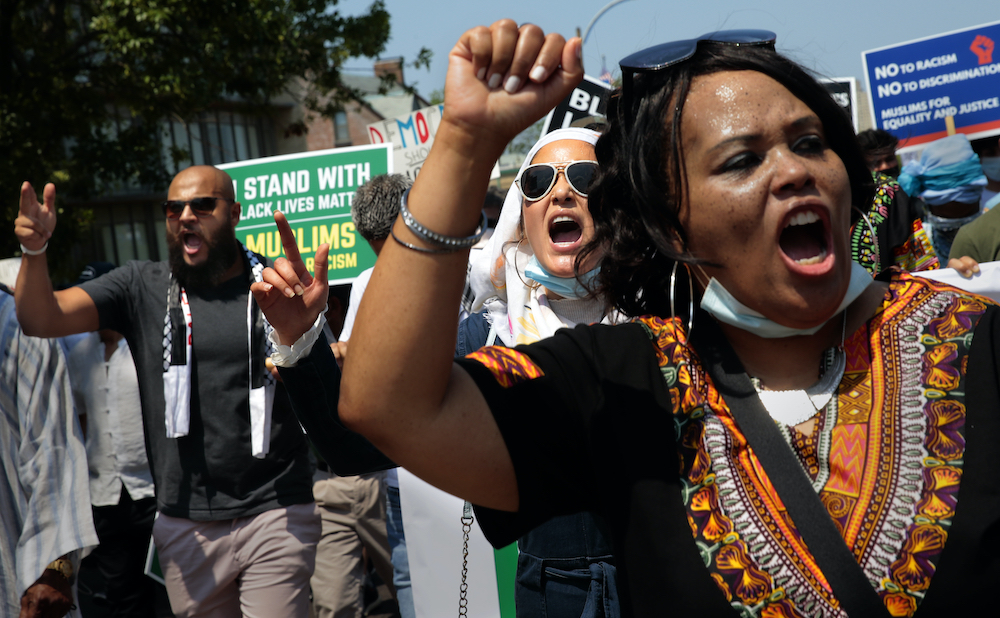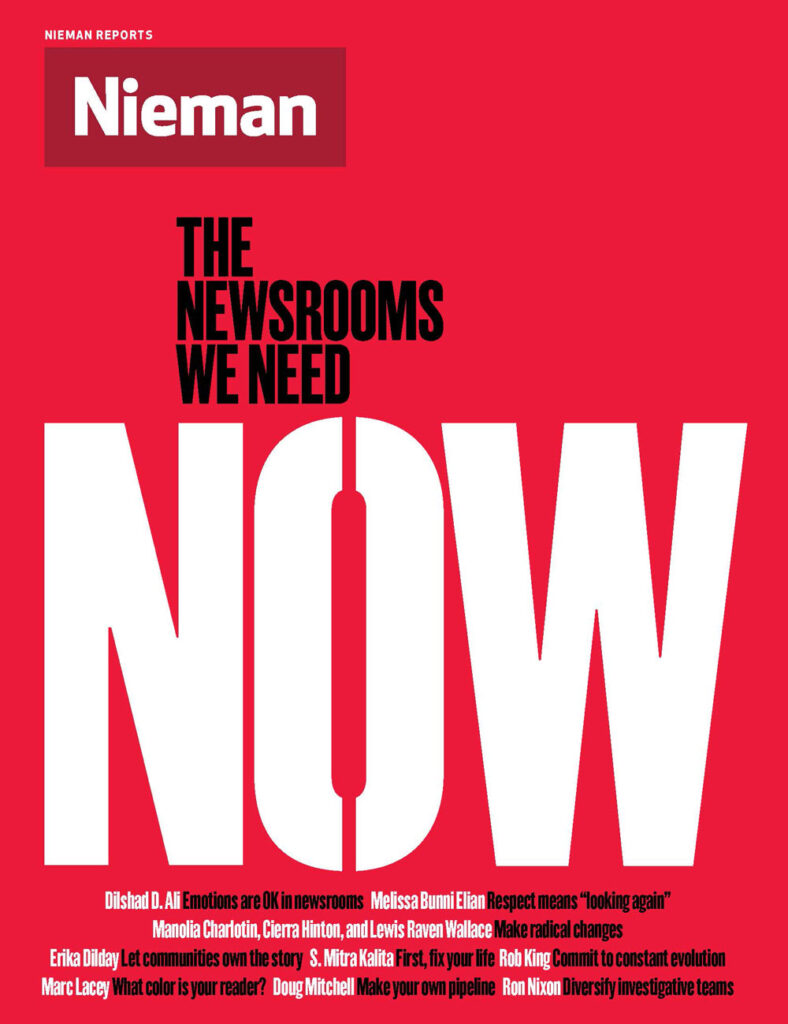I can’t remember his name now, but I remember the abject fear of getting something wrong and having to face his wrath — the classic editorial anger meted out to a journalist who got a fact wrong, misspelled someone’s name, or made some other cardinal mistake in reporting and writing a story.
I was a senior in the College of Journalism at the University of Maryland at College Park, in my last semester before graduating, doing a reporting internship in the Howard County office of The (Baltimore) Sun. And I was on strike two with my editor, having made an error in a previous reporting assignment. This time I had pitched and written a story on the Qurbani, or animal sacrifice, which takes place annually during the Eid-ul-Adha holiday, and how local Muslim farms and businesses handled it.
After the story ran in the weekend edition, I went into the newsroom on Monday, excited to hear feedback. Only it was my editor who called me to his desk, which was never a good thing. You only got called to his desk to either be berated about something or questioned about your reporting. I knew it was the former. The name of one of my interview subjects was misspelled. That was an unforgivable journalism 101 mistake, and my editor took me to task.
“We’re going to have to print a correction,” he told me. “And if you make a mistake like that again, your internship is done.”
I apologized, promised it wouldn’t happen again and shamefully returned to my desk in the back of the newsroom. A few minutes later, when no one was looking, I slipped out to the bathroom to cry.
That was standard fare when I started out as a reporter/writer. The relationship between a reporter and her immediate editor was no-nonsense. You were expected to do your work, do it flawlessly, swallow (for the most part) the edits made to your article(s), and above all, check your emotions and excuses at the door. The berating I received back then was humiliating but effective: I’ve never forgotten to triple check a name spelling.
But a few years later, when I was covering the aftermath of 9/11 for Islam Online, a Muslim media site at the time based out of Cairo, I never told my editor that I was worried for my safety while covering various aspects of the tragedy. It just wasn’t done. How to manage or be mindful of a reporter’s emotions—whether reprimanding a young staffer or addressing concerns around personal safety—was never part of the equation of what we were taught in J-school or learned in newsrooms in the first half of my 25-plus years as a journalist.
But now, as an editor running my own virtual newsrooms for the latter half of my career, it’s essential to acknowledge one’s feelings. Once upon a time, if I was reporting on, say, anti-Muslim bias and struggling to process my emotions, my editor would have probably said, “If you can't stand the heat, get out of the kitchen.” But to do that now is to deny reporters their right to own their feelings and apply that to their work.
With Black Lives Matter and ongoing coverage of other charged issues, reporters and writers are speaking up about racism they've faced on the job, opportunities denied them, how the stories they reported affect them, and the stress they endure in their work. These are necessary conversations. We are not automatons. Not only is it OK to have feelings about your work, it’s essential to do so to elicit deeper storytelling, thorough reporting, and impactful writing. How we manage those emotions within the reporting/writing/editing process is how we build more empathetic, honest, and grounded newsrooms where better stories are told.
This weight is one I’ve seen my writers carry—and carried myself—in covering issues of race, xenophobia, Islamophobia, violence against women, and a myriad of other stories, especially as members of those communities themselves. All this has informed how I manage my team of writers and our editing process at Haute Hijab, a hijab company with an editorial arm where I have the freedom to coordinate comprehensive coverage of Muslim women and Muslim communities. I also spent much of my career working for multifaith and Muslim independent media sites, like Patheos, Altmuslim, and Beliefnet.
What I’ve come to believe from my experience is that the mental and emotional health of journalists should be a priority. With proper justification, journalists shouldn’t have to take on an assignment if they feel compromised, not up to it, or are emotionally laden. Editors should also consult with writers on story assignments to make sure they feel they can take a story on. Yes, sometimes stories have to be assigned even if a reporter may be struggling. That’s the nature of this work. But we can build newsrooms where emotional health is considered, too.
In a study conducted by the American Press Institute on creating an empathetic newsroom, P. Kim Bui argued that empathy helps journalists better cover neglected communities and issues: “A newsroom’s relationship with underserved communities can be harmed by all sorts of editorial and business actions: mishandled interactions between reporters and sources, story selection that takes a one-dimensional view of some communities, continual downsizing in the newsroom, diversity in entry-level positions but not on the masthead. Those problems can persist even with a press for diversity. But they can be addressed by a newsroom that embraces empathy.”
That sort of empathy should be extended to what journalists themselves feel and endure, especially for journalists of color covering their own communities. In a Washington Post article, Dorothy Tucker, president of the National Association of Black Journalists and an investigative reporter for Chicago’s CBS2, talked about reporting on BLM stories in Chicago. While she considered the risks her Black community and family faced for “simply being born with darker skin,” she said it doesn’t keep her from doing her job: “But at the end of the day, I think we all go home and weep, and pray, and hope, and deal with the anger and disappointment. The attack on press freedom is disheartening on its own—but imagine the terror of wearing both a press badge and Black skin in this country at the same time.”
As with most media outlets, mainstream and alternative, we also upped our coverage of Black Lives Matter and specifically issues facing Black Muslims when the horrific death of George Floyd was first reported out of Minneapolis. Writing/reporting on BLM, especially issues and stories affecting Black Muslims, isn’t a novel thing for us. But like other media outlets, we realized we had a lot more work to do. We didn’t want to produce stories in wake of the ongoing protests and then go back to business as usual. So, I’ve worked with my writers to continue to highlight Black Muslim women and explore issues of racism within Muslim communities, among other coverage.
Besides in-house writers at Haute Hijab, my team consists of four dynamic contributing freelance writers/reporters, all Muslim women, one of whom is Black. A lot of articles focusing on Black Muslim women and issues fall on her, some out of choice, some out of necessity. A few weeks after BLM protests erupted nationwide, with so many of us reckoning with our implicit and explicit biases as a society and in our coverage of these issues, I had my monthly one-on-one assignment meeting with this particular writer.
She told me, “Please don’t assign me those kinds of stories for a while. I’m calling in Black.”
And so, I didn’t, because her emotional well-being matters to me and because I know how exhausting it can be to write on issues and stories that are also yours to deal with when you come home.
Dilshad D. Ali is the editor at Haute Hijab and the former managing editor of Patheos Muslim.
The Newsrooms We Need Now
As American society—and American newsrooms—grapple with an unprecedented time in the country’s racial justice movement, Nieman Reports is publishing a series of essays about how journalism should respond to the challenges of the moment, from accelerating journalists of color moving into senior decision-making roles to improving coverage of racism and white supremacy.




